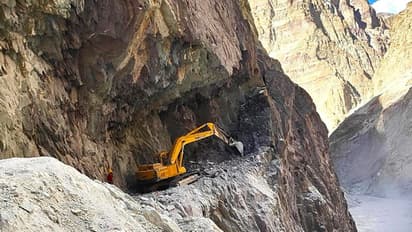BRO's BIG achievement: Connectivity established on third all weather road to Ladakh
Published : Mar 27, 2024, 06:48 PM IST
The Border Roads Organisation (BRO) has completed the construction of the 298-km Nimmu-Padam-Darcha road in Ladakh, providing crucial connectivity to the region amid the border standoff with China. This road, the third axis to Ladakh, will enhance defence preparedness and economic development in the Zanskar valley.
Stay updated with the Breaking News Today and Latest News from across India and around the world. Get real-time updates, in-depth analysis, and comprehensive coverage of India News, World News, Indian Defence News, Kerala News, and Karnataka News. From politics to current affairs, follow every major story as it unfolds. Get real-time updates from IMD on major cities weather forecasts, including Rain alerts, Cyclone warnings, and temperature trends. Download the Asianet News Official App from the Android Play Store and iPhone App Store for accurate and timely news updates anytime, anywhere.
